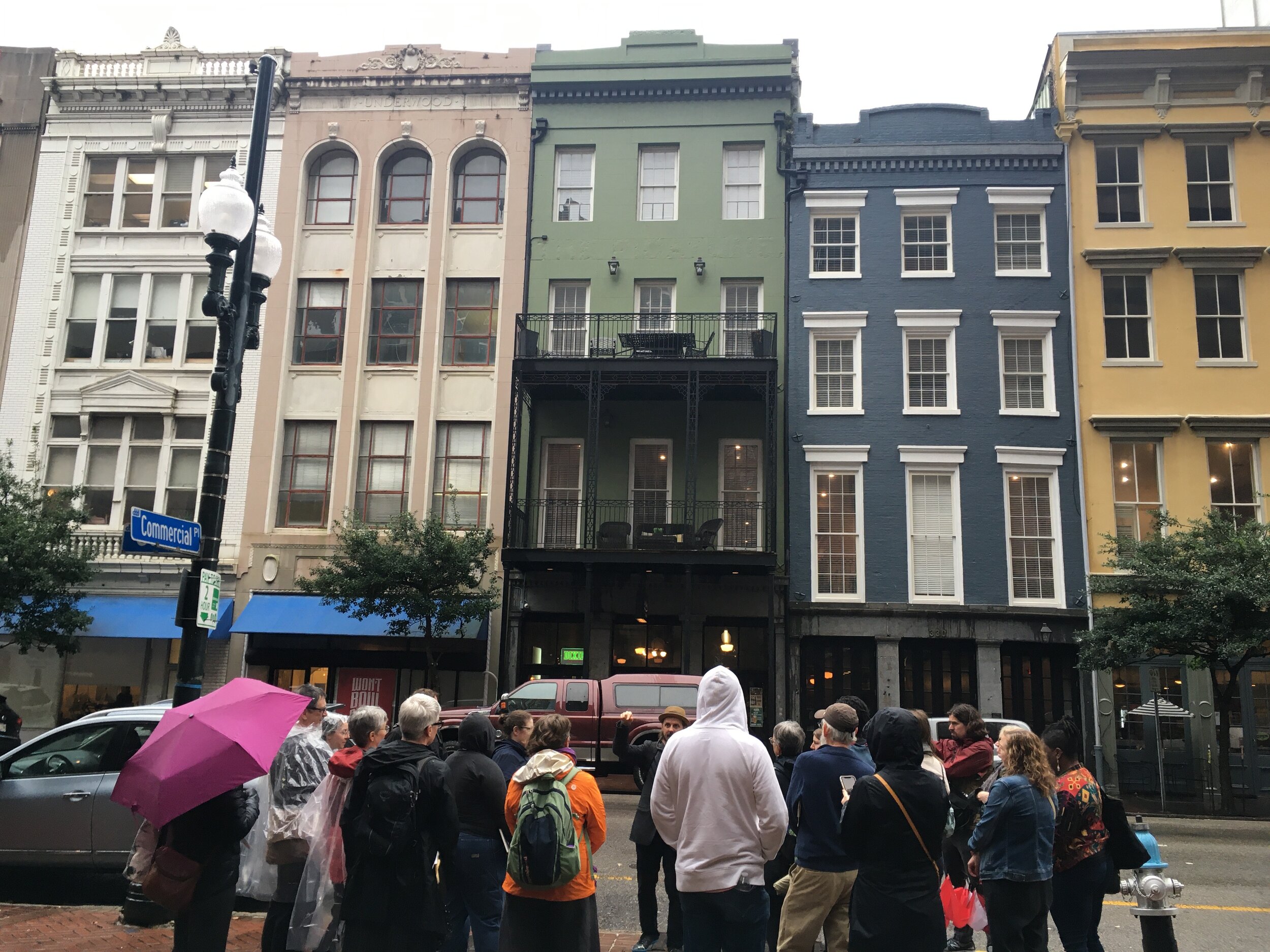In the first days of January 2020 I attended the College Book Arts Association (CBAA) biennial conference, held this time in New Orleans, Louisiana. Though I have been peripheral to the activities of this association through the local print/book arts community, I’ve never attended a conference. The closing of Oregon College of Art and Crafts, and the eminent closure of other small liberal arts schools with book arts programs contributed to a sense of urgency on my part. In addition, the programming of the C.C. Stern Type Foundry is intertwined with college level curriculums.
The 2020 conference was entitled “Intersections” and focused on the possibilities for increasing access to contemporary book arts education. This was manifest in the themes of many presentations — social practice using book arts, making private collections public, zines in the world of book arts, book arts education in rural areas, cultural heritage publishing, developing a context for inclusivity. I found the abstracts often intriguing, but I found myself wishing that the presentations themselves reflected an enthusiasm I assume most educators have in the classroom, rather than the reading of an academic paper.
Kudos to the organizers for including opportunities and “prompts” to encourage exchange in an ongoing manner, for showcasing member book work in an exhibit that powerfully expressed the theme of the conference, and for reaching into their home communities to offer resources and connections beyond the conference grounds. Though I missed tours held on the first day of the conference, I heard great things about the Amistad Research Center at Tulane and also the Paper Machine workspace. I did make it out on a very rainy tour walking tour led by NOLA DNA, focused on early print houses of New Orleans, and to see the CMYK Kings zine exhibit at Antennae Gallery.
Opening remarks were by Rachel Bruenlin and Bruce Barnes of the Neighborhood Story Project, a nonprofit collaborative ethnography organization that works in partnership with the University of New Orleans. They gave an overview of the community-based publishing projects they have engaged in, including documenting regional music and storytelling traditions in their most recent book Le Ker Creole (The Creole Heart): Creole Compositions and Stories from Louisiana.
The keynote address by Rebecca Snedecker was also marvelous, and resonant of the theme as she talked about the process of compiling Unfathomable City: A New Orleans Atlas. She took the audience on a visual journey of discovery in her home town, illuminating how that ultimately led her to a greater sense of understanding of the history and culture of New Orleans, and a deeper connection to her own place.
Of course the chance to again wander the city of New Orleans, to experience the unique culture and landscape of that place, to join with strangers and cross paths with old friends in the middle of the streets, to see how a city shifts and responds to each generation of challenges … those intersections do resonate as especially powerful in the present time.
Notes about archiving, letterpress typography and design, projects and items I find interesting in the art, printing and typecasting communities.




